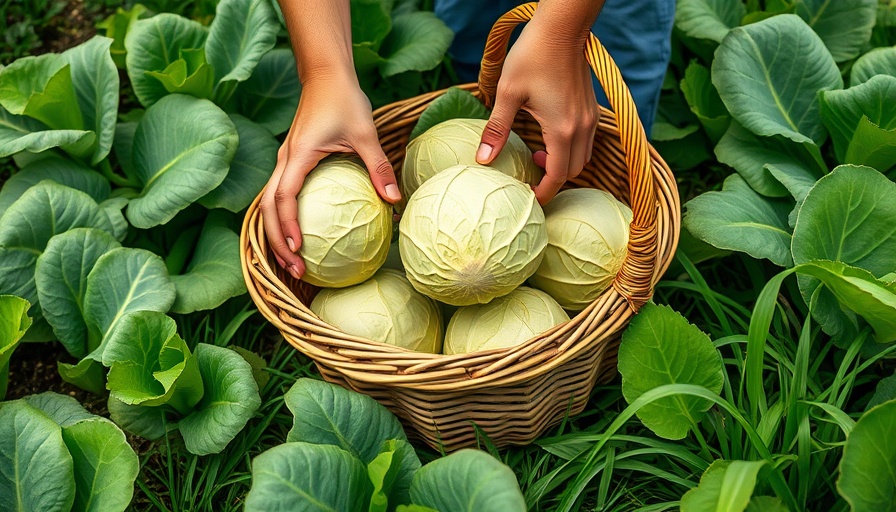
Embrace the Autumn: Why August is Crucial for Your Garden
As summer begins to fade, August reminds gardeners that there is still time to cultivate fresh vegetables before winter arrives. With slightly cooler temperatures and shorter days, this month provides a unique opportunity to direct sow a variety of vegetables that thrive in fall. Homeowners, especially those in Muskegon, can take advantage of this time by starting backyard planting projects that yield sustainable crops.
Vegetables to Sow: Your Guide to a Bountiful Harvest
Whether you’re new to gardening or a seasoned pro, understanding which vegetables to sow in August is key to maximizing your fall harvest. This season is ideal for crops that flourish in cooler temperatures, allowing you to enjoy fresh produce through the fall months. Here are some top choices to consider:
- Arugula: A spicy, flavorful green perfect for salads; it matures quickly, making it an easy addition to your garden.
- Bok Choy: This Asian green is not only nutritious but also grows rapidly, ready for harvest in as little as 30 days.
- Radishes: Quick-growing and necessary for any late summer garden, radishes can fill bare spots with vibrant colors and textures.
- Spinach: This leafy green fares well in cooler weather. It’s a staple that can be harvested multiple times through the season.
- Kale and Cabbage: Both are resilient vegetables that can withstand frost, making them ideal candidates for a late garden transition.
Aside from these, your local garden center will provide options for direct sowing other cooler-season vegetables like cauliflower and turnips, ensuring you have a variety of flavors and nutrients for the coming months.
Building Your Garden: Practical Tips for Muskegon Residents
For those in Muskegon ready to jump into planting, consider using raised beds or elevated planter boxes. These not only improve drainage but also provide a controlled environment for your plants. To construct outdoor soil beds, select a sunny spot and consider your plant spacing to maximize yield. Local resources often include DIY gardening guides, making it easy to design your backyard utility house or storage shed for easy access to gardening tools.
Essential Tools for Fall Gardening Success
Utilizing the right tools can significantly impact your gardening experience. Automated watering hacks, such as drip irrigation or homemade watering devices, can help maintain soil moisture without daily labor. Additionally, investing in a leaf cleanup machine or a composting barrel can help keep your space tidy while enriching your garden's soil.
Creating Lasting Memories Through Gardening
Gardening isn’t just about the vegetables; it’s also a way for families to bond and create lasting memories. Imagine gathering around the dinner table to enjoy a meal using ingredients harvested from your yard. In Muskegon, local garden clubs and community initiatives often support novice gardeners, providing a social connection that enhances the growing experience.
Final Thoughts: Your Opportunity Awaits
August is not just another month; it’s your chance to relish in nature’s bounty before winter. So grab your seeds, sow with your expertise, and witness the fruits (and vegetables) of your labor. Whether you’re direct sowing or planning your next garden project, remember that your local community, including services like Norther-LawnCare.com, is here to help you succeed along the way.
For professional assistance, contact your five-star local lawn care and property management company, Norther-LawnCare.com, Everett Lucas at 231-450-3414.
 Add Row
Add Row 
 Add
Add 


Write A Comment